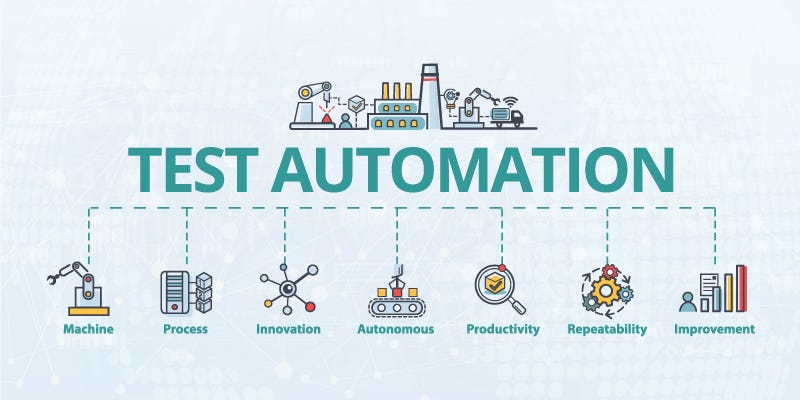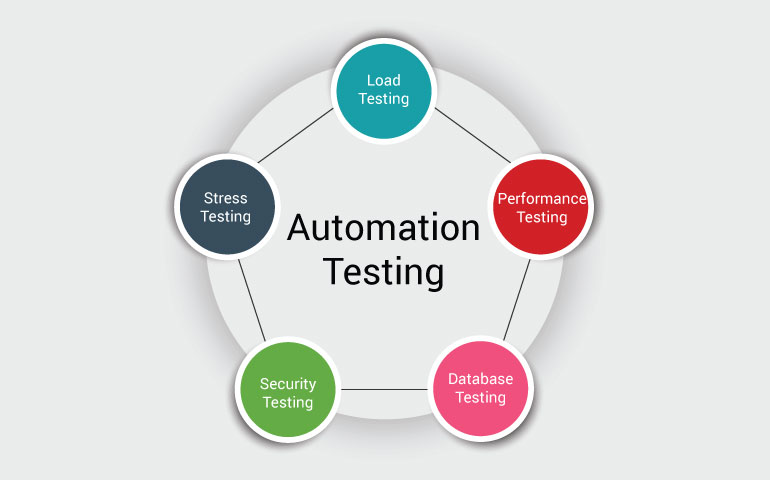From Guidebook to Automated Screening: A Comprehensive Guide to Transitioning Efficiently and Successfully
In the world of software program testing, the shift from handbook to automated processes has actually ended up being a progressively essential change for organizations seeking to boost effectiveness and precision in their screening techniques. As modern technology remains to breakthrough, the need for smooth and efficient automated testing methods has actually never ever been extra pressing. The trip from guidebook to automated testing is not without its challenges, but when approached tactically and with a clear strategy in mind, the benefits can be significant - automation testing. In this comprehensive guide, we will certainly check out crucial steps and considerations essential for an effective change, from the initial selection of devices to the combination of automation into existing operations. Stay tuned to reveal the understandings that will help pave the method for a smoother and much more effective testing procedure.
Advantages of Automated Checking
Automated testing offers countless benefits, boosting efficiency and precision in software application advancement processes. One key advantage is the considerable decrease in testing time. Automated examinations can be run at the same time on multiple tools and running systems, considerably speeding up the testing phase compared to hand-operated screening. This raised performance permits for faster responses on the top quality of the software program, making it possible for developers to determine and attend to issues quickly.
Moreover, automated testing makes certain a greater degree of accuracy in finding defects. Because automated examinations follow predefined manuscripts, human mistake is decreased, bring about more trusted examination outcomes. Uniformity in testing is also improved, as automated examinations perform the same actions exactly each time they are run. This consistency is essential in guaranteeing that all performances of the software application are extensively tested, reducing the probability of unseen insects slipping through to manufacturing.
Picking the Right Tools

Firstly, examine your goals and requirements. Comprehend the range of your task, the technologies involved, and the capability of your team. This analysis will certainly help you determine the capabilities and attributes you need in your testing tools.
Secondly, take into consideration the compatibility of the tools with your existing systems and processes. Smooth assimilation with your present software development lifecycle is necessary to make sure a smooth shift to automation.
Additionally, assess the scalability and adaptability of the devices. As your screening needs evolve, the devices should be able to adjust and fit modifications effectively.
Finally, consider the assistance and area around the devices. When executing automated testing, durable support and an active user neighborhood can supply beneficial resources and help. By thoroughly considering these facets, you can select the right tools that straighten with your requirements and established the stage for a successful change to automated screening.
Writing Reliable Examination Scripts

When crafting examination scripts, it is vital to think about the details requirements of the software program being tested and guarantee that the scripts resolve all vital capabilities. Clear and detailed calling conventions for examination scripts and examination situations can enhance readability and maintainability. Additionally, integrating mistake handling mechanisms within the test scripts can aid in recognizing and dealing with problems promptly.
In addition, arranging test manuscripts into modular elements can boost reusability and scalability, reducing redundancy and enhancing effectiveness in test manuscript maintenance. Normal testimonials and updates to examine manuscripts are crucial to maintain rate with developing software needs and performances. By adhering to these concepts, testers can create robust and reliable test scripts that contribute substantially to the success of automated screening processes.
Integrating Automation Into Workflows
Efficient combination of automation tools right into existing use this link process improves processes and improves efficiency within software program development cycles. When integrating automation into workflows, it is critical to identify recurring jobs that can be automated to save time and reduce human error. By flawlessly incorporating automated testing devices like Selenium or Appium into the software development lifecycle, teams can achieve faster feedback on code modifications, causing quicker bug detection and resolution. This assimilation allows for constant testing throughout the growth process, making certain that any problems are identified at an early stage, causing higher software quality. Additionally, automation can be made use of to set off tests automatically after each code commit, supplying prompt recognition and liberating testers to focus on even more complicated circumstances. Appropriate assimilation of automation devices needs collaboration between advancement, screening, and procedures groups to develop a unified process that enhances effectiveness and performance in supplying high-quality software items.
Guaranteeing a Smooth Transition
Effectively transitioning to automated testing includes thorough planning and mindful execution to reduce interruptions and optimize effectiveness in go to website the software application development procedure - automation testing. To make certain a smooth change, it is necessary to start by carrying out a complete analysis of the current screening procedures and recognizing locations where automation can bring one of the most substantial advantages. Engaging with all stakeholders beforehand while doing so, consisting of programmers, testers, and project managers, is important for garnering assistance and buy-in for the automation effort
Interaction is key during this shift phase. Clear communication of the goals, benefits, and assumptions of automated screening helps to manage any type of resistance or problems that may emerge. Additionally, providing sufficient training and sources for employee to upskill in automation devices and strategies is crucial for ensuring an effective change.

Verdict
To conclude, transitioning from handbook to automated screening offers various advantages, including enhanced efficiency and dependability. By choosing the proper devices, composing effective test scripts, and integrating automation effortlessly right into operations, organizations can make certain a effective and smooth shift. It is necessary to accept automation as a valuable property in software program screening processes to enhance overall quality and productivity.
In the world of software application testing, the shift from handbook to automated processes has become an increasingly vital Full Report change for organizations looking for to boost performance and precision in their testing practices. Automated tests can be run concurrently on multiple tools and running systems, considerably speeding up the testing phase contrasted to manual screening. Uniformity in testing is likewise enhanced, as automated tests implement the same steps specifically each time they are run.To ensure the effective implementation of picked testing devices, the creation of reliable examination manuscripts plays a vital function in confirming the functionality and performance of automated processes - automation testing. By complying with these principles, testers can develop effective and durable examination scripts that contribute significantly to the success of automated testing processes